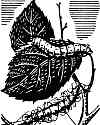|
A Radio Talk by Charles F. Kettering The Industrial man as a rule wants to know how our research organization is set up and how we select our problems. The Educator is interested in our projects from the standpoint of how much they involve Physics, Chemistry or Engineering. We, of course, believe that all fields of human endeavor offer great opportunities for research. Take for instance our three primary necessities - Food, Clothing and Shelter. They have been improved over centuries, yet there seems to be as great an opportunity for advancement here as in any new field. As an example - let us take clothing and, one material in particular - silk. Man in developing the sources of clothing, relied heavily on Nature - using plants, animals and even insects as suppliers of materials.  History states that as early as the year 2200 B.C. the
Chinese had already spun thread and produced garments of silk. As the
demand for silk increased, the business of cultivating silkworms,
raising mulberry leaves to feed them, and weaving the fabric became a
great industry in China. China kept the process a secret for almost
3000 years.
History states that as early as the year 2200 B.C. the
Chinese had already spun thread and produced garments of silk. As the
demand for silk increased, the business of cultivating silkworms,
raising mulberry leaves to feed them, and weaving the fabric became a
great industry in China. China kept the process a secret for almost
3000 years. |








